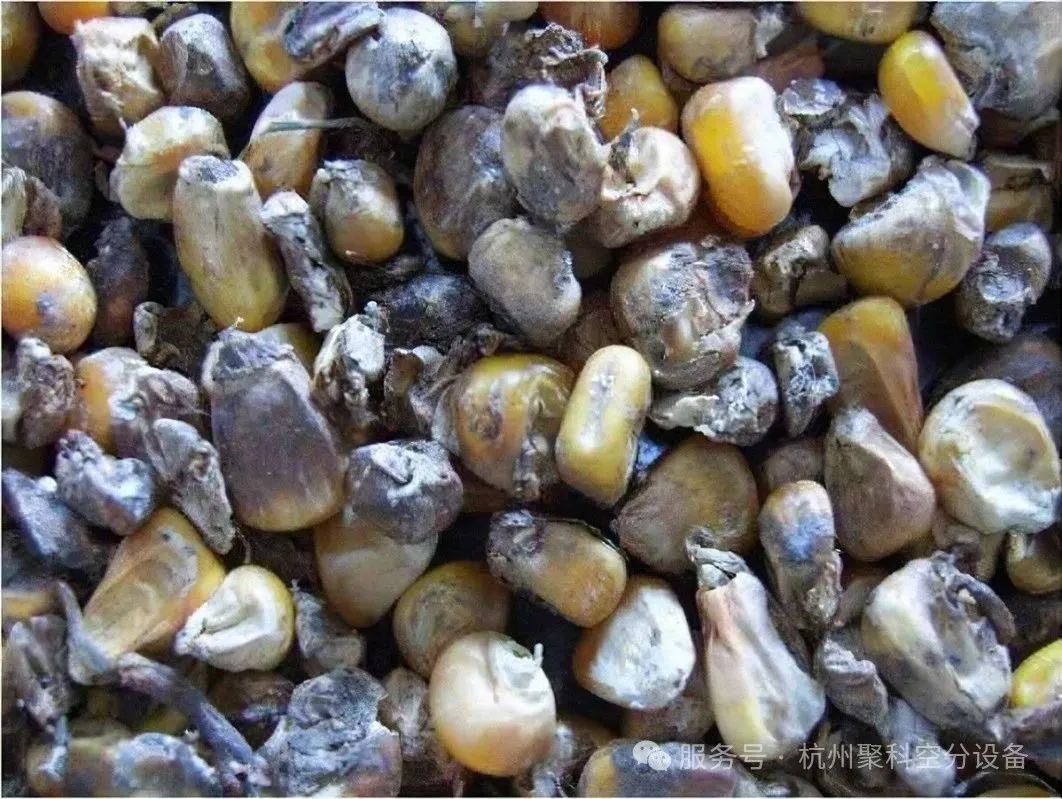The principle and application of nitrogen in preventing grain mildew
In today's rapidly developing technology, nitrogen has become an important technological means of safeguarding food security. Why is nitrogen so effective in preventing food spoilage? Let's delve into the mysteries behind it.

Did you know? Globally, hundreds of millions of tons of grain are lost each year due to spoilage. This spoiled grain is not only inedible but may also produce deadly toxins such as aflatoxins. However, with the rapid development of technology, nitrogen has become an important technological means of safeguarding food security. Why is nitrogen so effective in preventing grain spoilage? Let's delve into the mysteries behind it.
To understand how nitrogen prevents grain spoilage, we must first understand why grain spoils. During storage, grains, like tiny living organisms, continuously undergo respiration, consuming oxygen and releasing carbon dioxide and heat. Ubiquitous mold spores in the warehouse, like lurking invaders, quickly awaken once the temperature, humidity, and oxygen levels are suitable. They rapidly grow and reproduce on the grain surface, releasing enzymes that break down the grain's structure, decomposing starch and protein into smaller molecules, causing the grain to mold, deteriorate, and become sour and smelly. The originally plump grains become shriveled and clumped.
At this point, the role of nitrogen is crucial. Nitrogen is a colorless, odorless gas with extremely stable chemical properties. Under standard atmospheric pressure, the nitrogen-nitrogen triple bond (N≡N) in the nitrogen molecule has a bond energy as high as 945 kJ/mol, making it difficult to react with other substances. Using this characteristic, high-purity nitrogen is injected into the grain warehouse through professional nitrogen generation equipment, such as pressure swing adsorption (PSA) nitrogen generators or membrane separation nitrogen generators, quickly displacing the air inside the warehouse. When the oxygen concentration in the warehouse drops from the normal 21% to 1%-4%, and the carbon dioxide concentration increases to 12%-18%, an inert environment of "low oxygen and high nitrogen" is formed.
In this special environment, the respiration of the grain is significantly inhibited. Due to the lack of sufficient oxygen, the activity of key enzymes involved in respiration in grain cells is reduced, slowing down the respiration rate, reducing the consumption of nutrients, and naturally extending the storage life. At the same time, the survival of molds, pests, and other organisms faces a "dead end." As aerobic microorganisms, molds cannot germinate normally in a low-oxygen environment, and the growth and metabolism of their hyphae are severely hindered, unable to obtain enough energy to reproduce; pests will suffocate and die due to lack of oxygen, unable to bore into and damage the grain. In addition, nitrogen can also isolate external moisture, reduce the moisture content of the grain, and deprive molds of their humid survival environment, fundamentally eliminating the possibility of spoilage.
Currently, nitrogen grain storage technology has been widely used globally. In major grain-exporting countries such as the United States and Canada, large-scale grain warehouses generally use nitrogen circulation systems, transforming the entire warehouse into a "nitrogen fortress," successfully reducing grain loss rates to below 1%; China's State Grain Administration is also actively promoting this technology, laying nitrogen pipelines in grain piles to achieve precise temperature, humidity, and gas control, ensuring the safe storage of tens of thousands of tons of wheat, rice, and other staple grains.
Nitrogen grain storage is not only efficient but also a model of green environmental protection. Compared with traditional chemical fumigation methods (such as using highly toxic agents like aluminum phosphide), nitrogen does not leave any harmful substances and does not pollute the grain or the environment, safeguarding food safety; at the same time, it can also reduce storage costs and reduce economic losses due to grain spoilage, achieving a win-win situation in economic and ecological benefits.
From "relying on the weather" to "technology protecting grain," nitrogen is playing an increasingly important role in grain storage. It uses the power of science to build a strong defense line for our "national grain reserves," safeguarding the hard-won fruits of harvest.
Other areas
Oil storage and pressurized pipeline cleaning and purging of oil and gas wells, nitrogen sealing, nitrogen displacement, solvent recovery.
Used for food preservation and grain storage, pest control, food drying and sterilization, quick freezing of food, etc.
Provide the necessary gas raw materials for the preparation of new energy materials, battery production, and create an inert gas environment.
Ensure the manufacturing of electronic components and the stable operation of equipment, providing gas support for maintenance, combustion assistance, cooling, and other aspects related to thermal power generation equipment.
Nitrogen generator: Prevents oxidation, inhibits bacterial growth, and produces odors in biopharmaceuticals, providing protection throughout the process. Oxygen generator: Provides an oxygen-rich environment.
When signs of fire occur in the goaf or other locations, nitrogen injection is needed for fire prevention. The nitrogen device is lowered into the mine. It is used for annealing protective gas and sintering.
Used in the aerospace composite field, providing the necessary inert atmosphere for the molding and reinforcement processes of large carbon fiber composite wings.
Provide protection for the safety of oil and gas reserves, prevent oxidation, nitrogen sealing, and ensure dust suppression, fire prevention, and nitrogen sealing for coal reserves.

